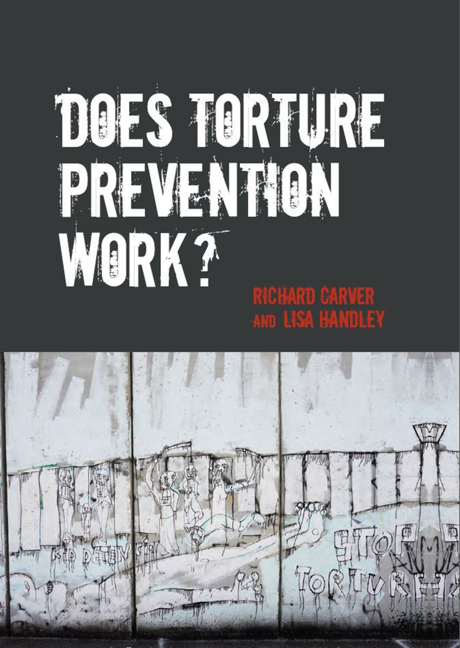Book contents
- Frontmatter
- Contents
- List of Tables
- List of Figures
- Foreword
- Acknowledgments
- Contributors
- 1 Introduction
- Overview and Findings
- Prevention Sustained
- Prevention Stalled
- Prevention Expected
- Prevention Denied
- 14 Ethiopia
- 15 India
- 16 Kyrgyzstan
- 17 The Philippines
- Conclusion and Future Strategies
- Bibliography
- Index
17 - The Philippines
from Prevention Denied
- Frontmatter
- Contents
- List of Tables
- List of Figures
- Foreword
- Acknowledgments
- Contributors
- 1 Introduction
- Overview and Findings
- Prevention Sustained
- Prevention Stalled
- Prevention Expected
- Prevention Denied
- 14 Ethiopia
- 15 India
- 16 Kyrgyzstan
- 17 The Philippines
- Conclusion and Future Strategies
- Bibliography
- Index
Summary
Introduction
What is the relation between Philippine anti-torture laws and the incidence of torture? To what extent have measures to curb torture succeeded? This chapter critically examines torture in the Philippines between 1985 and 2014, and concludes that there are two faces of torture in the country – law and practice – which, to this day, diverge widely.
The chapter draws on reports by United Nations bodies such as the Committee against Torture, the United States Department of State, Amnesty International, Human Rights Watch, and other NGOs, and interviews with government officials and members of civil society.
Incidence of torture
The Marcos regime
Ferdinand Marcos's rule ended 14 months into the period under review. In the words of the Free Legal Assistance Group and Foundation for Integrative and Development Studies of the University of the Philippines: ‘The Philippine military was the fist of former President Marcos’ authoritarian rule. Between 1972 and 1986, elite torture units became his instruments of terror. Torture and execution without due process were widely practised by the state through a series of Presidential orders and decrees’.
These orders and decrees suspended safeguards and created conditions that considerably increased the risk of government abuse. They included Presidential Proclamation no. 1081, which declared martial law and authorized detention of individuals charged with rebellion and similar offences (until the President ordered their release), and General Order no. 2-A, which directed the Secretary of National Defense to arrest individuals for crimes such as conspiring to seize state power.
Both orders were widely used to suppress dissent and political opposition to the regime, though their targets were the two principal armed insurgencies that have been active during the period, a national movement led by the Maoist Communist Party of the Philippines and its armed wing, the New People's Army, and a Muslim separatist insurgency in Mindanao.
- Type
- Chapter
- Information
- Does Torture Prevention Work? , pp. 591 - 624Publisher: Liverpool University PressPrint publication year: 2016

